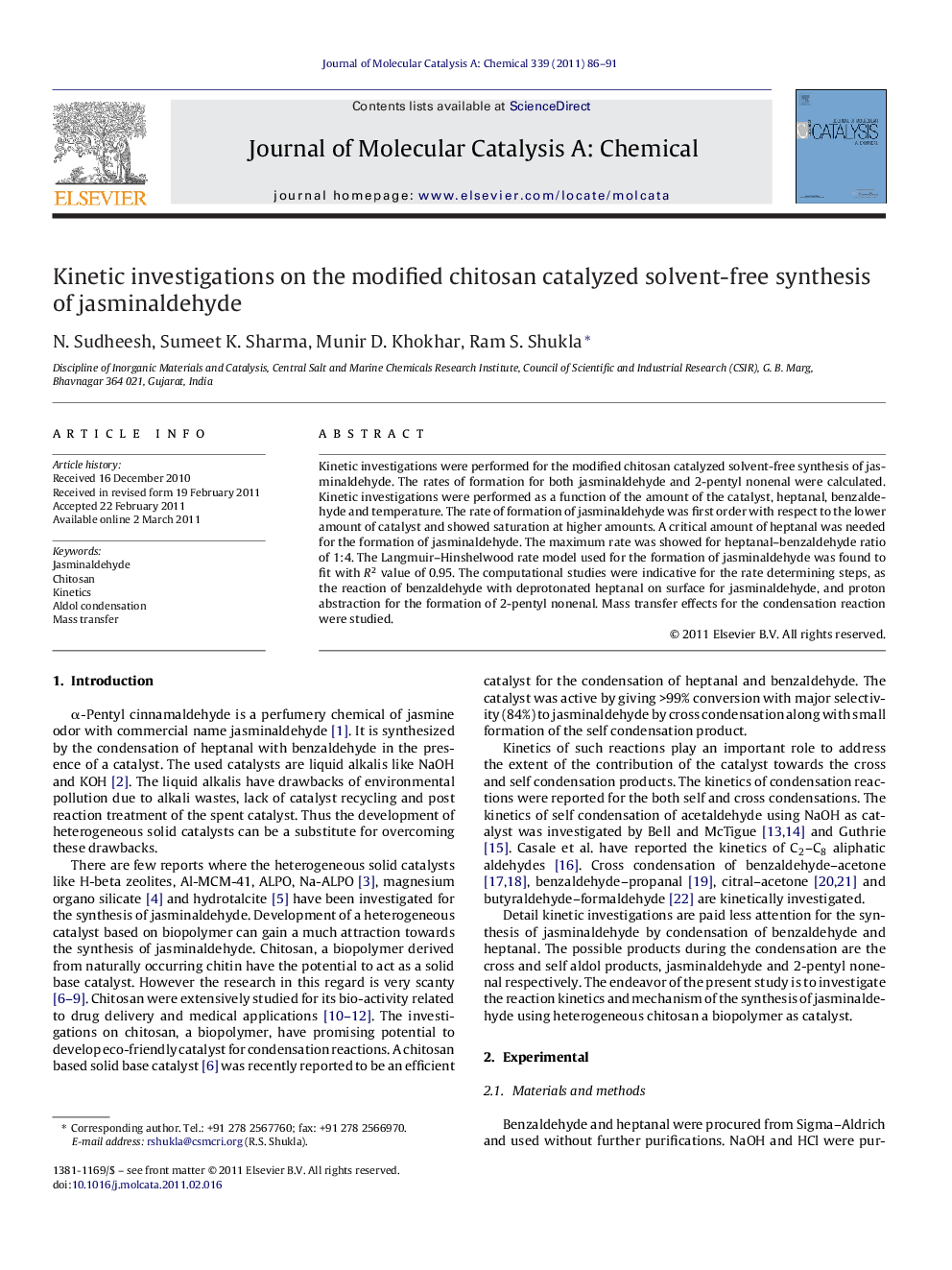| کد مقاله | کد نشریه | سال انتشار | مقاله انگلیسی | نسخه تمام متن |
|---|---|---|---|---|
| 66474 | 48433 | 2011 | 6 صفحه PDF | دانلود رایگان |

Kinetic investigations were performed for the modified chitosan catalyzed solvent-free synthesis of jasminaldehyde. The rates of formation for both jasminaldehyde and 2-pentyl nonenal were calculated. Kinetic investigations were performed as a function of the amount of the catalyst, heptanal, benzaldehyde and temperature. The rate of formation of jasminaldehyde was first order with respect to the lower amount of catalyst and showed saturation at higher amounts. A critical amount of heptanal was needed for the formation of jasminaldehyde. The maximum rate was showed for heptanal–benzaldehyde ratio of 1:4. The Langmuir–Hinshelwood rate model used for the formation of jasminaldehyde was found to fit with R2 value of 0.95. The computational studies were indicative for the rate determining steps, as the reaction of benzaldehyde with deprotonated heptanal on surface for jasminaldehyde, and proton abstraction for the formation of 2-pentyl nonenal. Mass transfer effects for the condensation reaction were studied.
Figure optionsDownload high-quality image (96 K)Download as PowerPoint slideHighlights
► Kinetics on the synthesis of jasminaldehyde over modified chitosan as a catalyst.
► Initial first order followed by saturation kinetics for the amount of catalyst.
► A critical amount of heptanal was needed for the formation of jasminaldehyde.
► The kinetics follows best fit with Langmuir–Hinshelwood rate model.
Journal: Journal of Molecular Catalysis A: Chemical - Volume 339, Issues 1–2, 1 April 2011, Pages 86–91